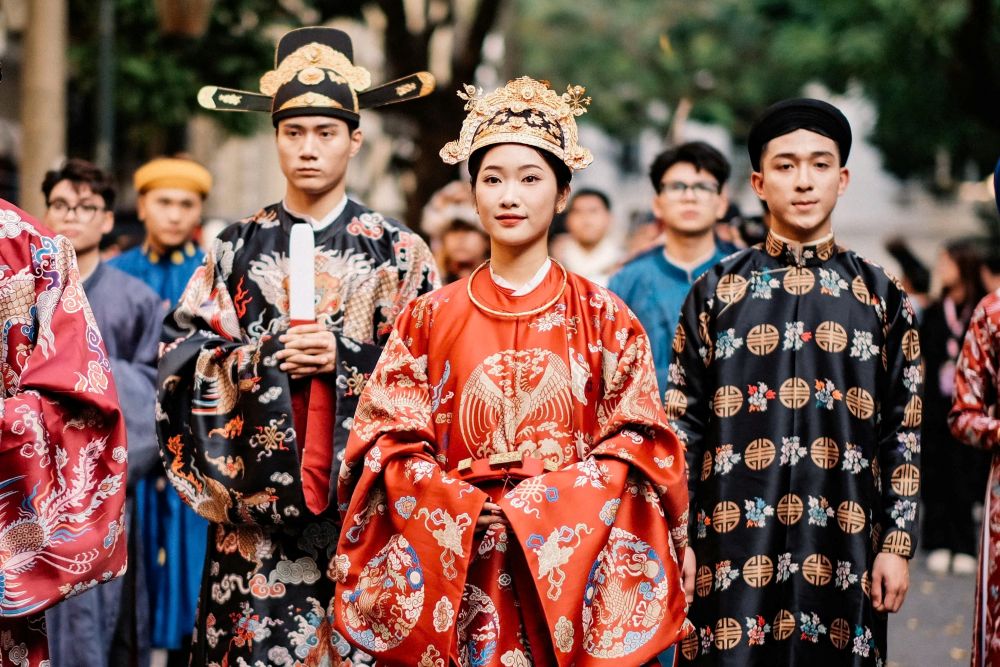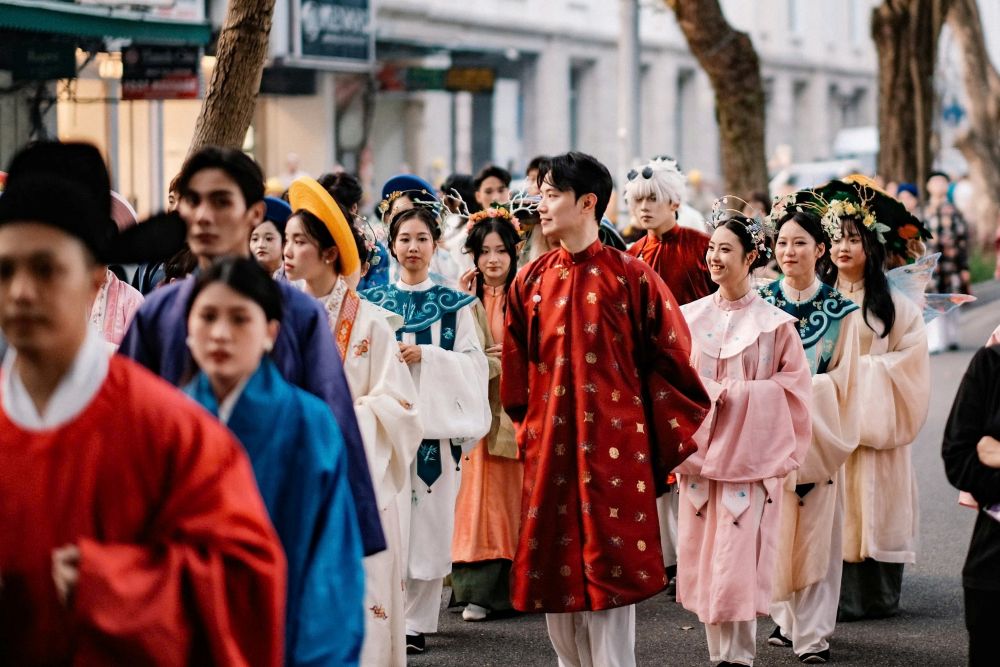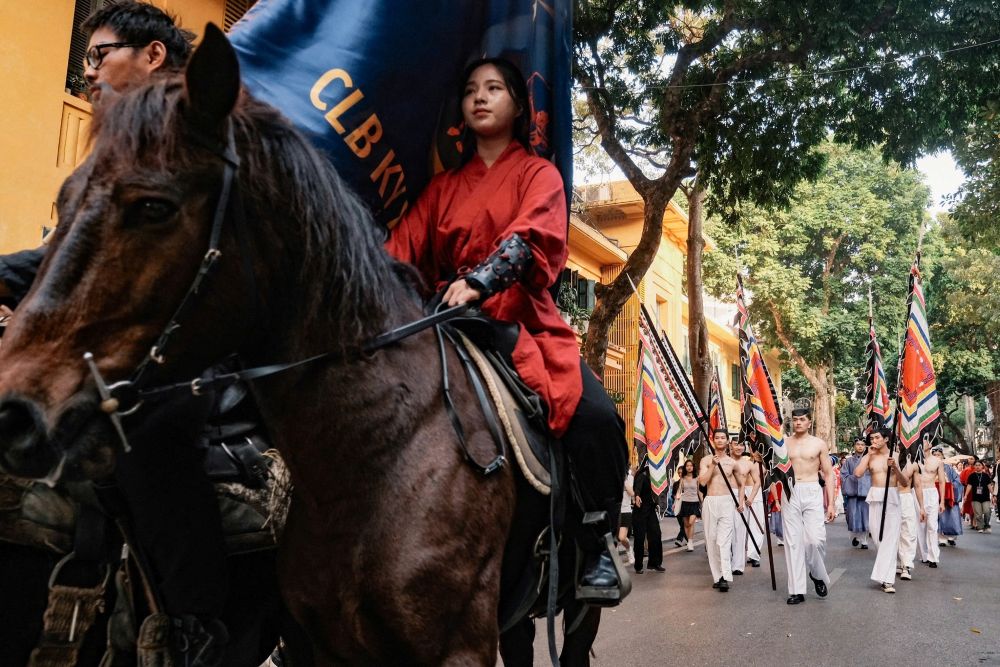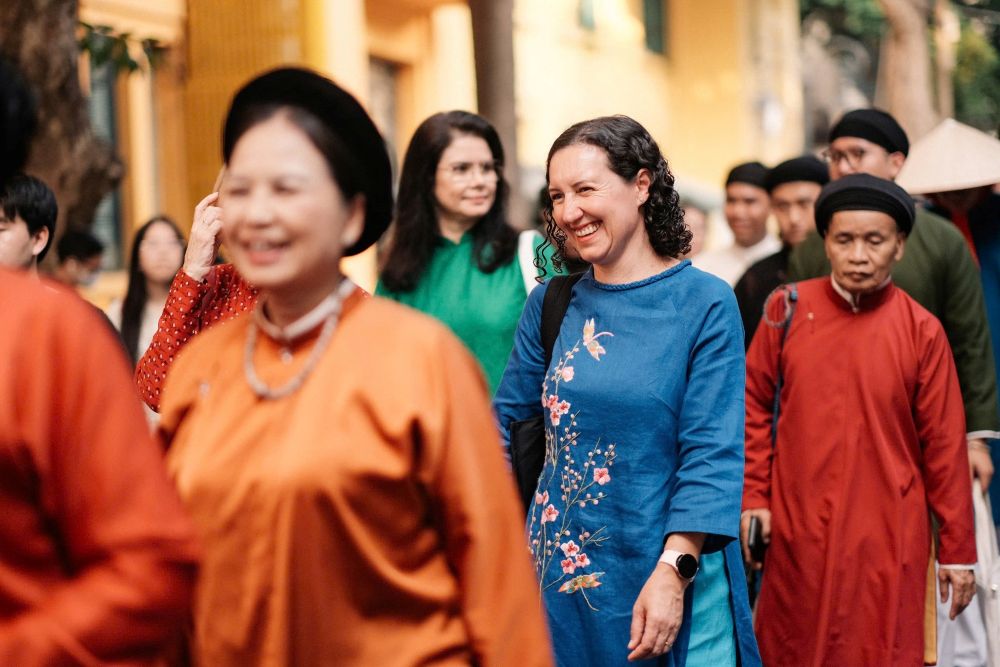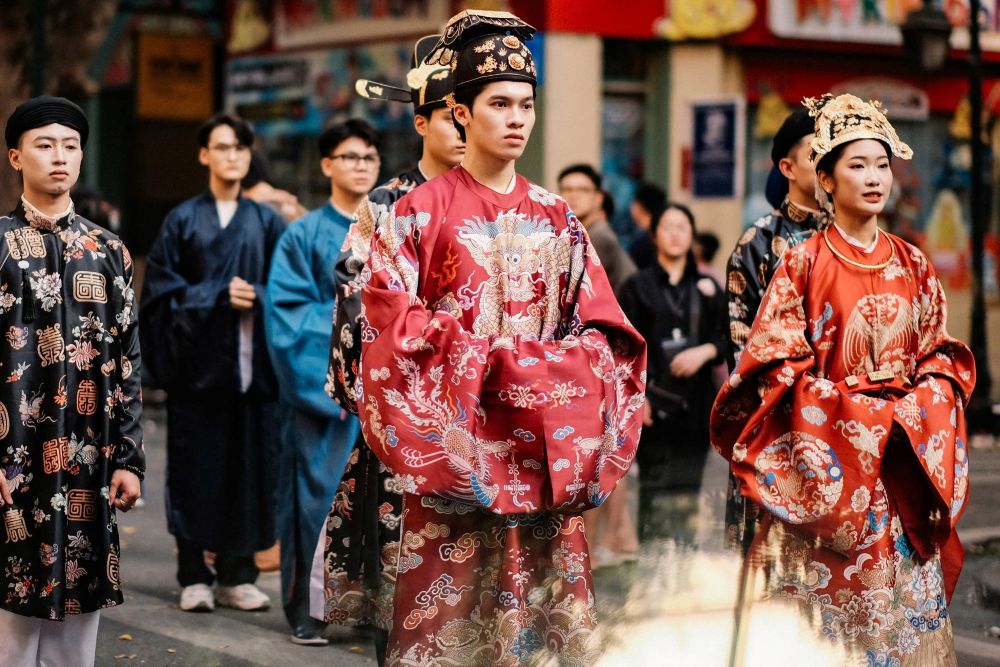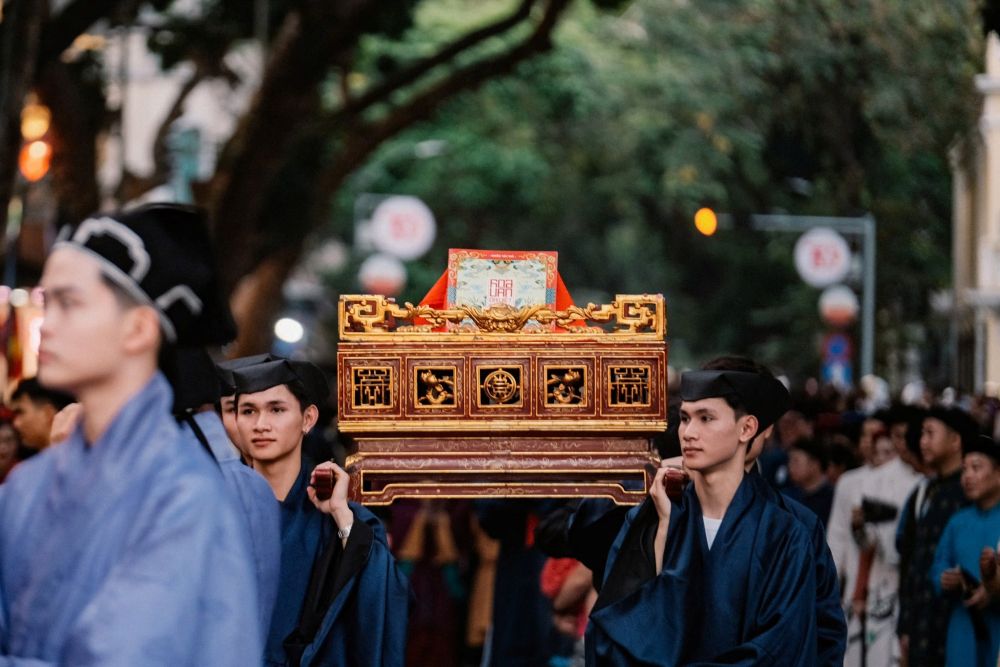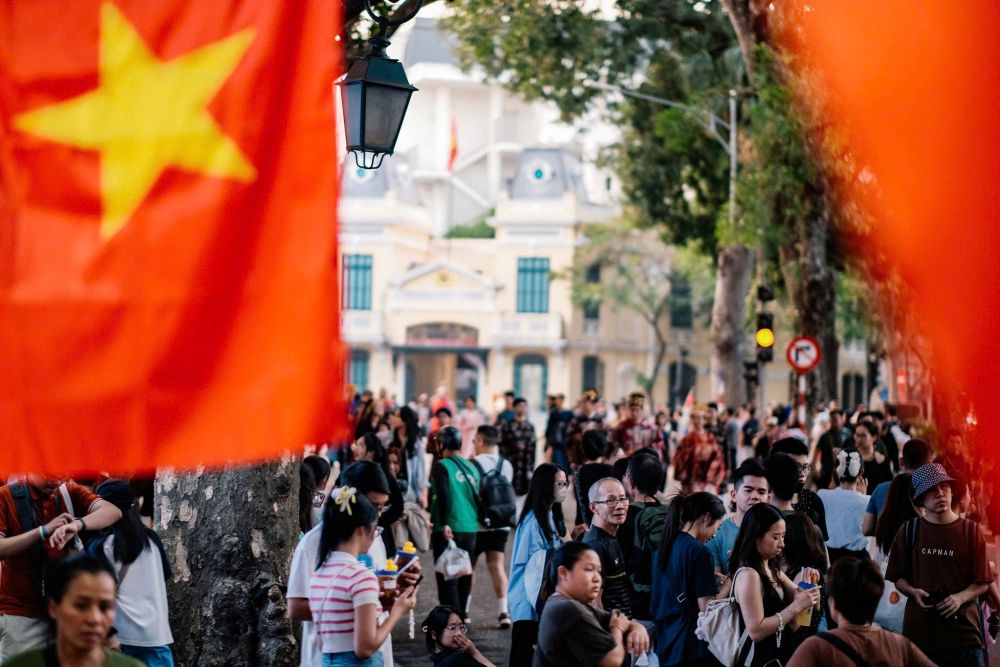“Bach Hoa Bo Hanh”: A Celebration of Vietnam’s Traditional Costumes
The “Bach Hoa Bo Hanh” event, a spectacular celebration of Vietnam’s traditional costumes, took place on November 17 as part of the Hanoi Festival of Creative Design 2024. This special occasion marked the 10th anniversary of the movement to restore and revere Vietnam’s rich wardrobe heritage.
The festival was initiated by the group “Dai Viet Co Phong,” which translates to “The Ancient Costumes of Dai Viet (The Great Viet Nation).” Their passion project, started on social media, attracted an impressive 400 young participants, all eager to showcase and celebrate Vietnam’s cultural attire.
According to a representative of the organization, the group’s participation in this year’s creative design festival aims to raise awareness and appreciation for Vietnamese traditional costumes. They also took the opportunity to present their extensive research on historical clothing, contributing to a deeper understanding of Vietnam’s fashion history.
| The parade, themed “Flow of Ancient Costumes,” celebrated the decade-long movement to revive Vietnam’s ancient costume heritage. It was a creative contribution to the new cultural era, intersecting tradition and modernity. |
The name “Bach Hoa Bo Hanh” translates to a celebration of a hundred flowers, symbolizing the vibrant diversity of Vietnamese costumes. It brings to life the metaphor of a blooming garden, where each unique costume is a flower in its own right, contributing to a colorful and captivating display.
As Vietnam’s largest traditional costume parade, “Bach Hoa Bo Hanh” featured an impressive lineup: Cavalry, Military Escort, Children’s Ceremonial Music, Giao Linh-Truc Linh Costume, Early Ao Dai, Ao Dai, Wedding Ceremony, Nhat Binh Costume, Van Kien, Imperial Court, Modern/Cosplay Vietnamese Costume, and Free Vietnamese Costume. Each group presented a distinct aspect of Vietnam’s wardrobe history, offering a comprehensive showcase of the country’s fashion evolution.
The parade commenced at the Vietnam National History Museum and made its way through iconic Hanoi landmarks, including the Hanoi Opera House, August Revolution Square, and Trang Tien Street, before concluding at the Hoan Kiem Lake pedestrian area. It left a trail of vibrant colors and a lasting impression on spectators and participants alike.
| This was the fourth edition of the “Bach Hoa Bo Hanh” parade, and it certainly left its mark on Hanoi’s cultural landscape. |
| Leading the procession was the cavalry, a majestic sight with their horses adorned in traditional attire. |
| Grace and elegance defined the ao dai group, with middle-aged women donning the elegant national dress, a symbol of Vietnamese femininity. |
| The Nhat Binh ancient costume, worn by Vietnamese noblewomen, stood out with its distinctive hats and colorful sleeve details. It was a testament to the sophistication and refinement of Vietnam’s aristocratic fashion. |
| Dancers from the 19th-century Nguyen dynasty presented a stunning display with Van Kien cotton jewelry adorning their necks, a tribute to the era’s refined aesthetics. |
| The royal robes for kings and mandarins were a highlight, featuring intricate dragon and phoenix embroidery on premium brocade. These garments represented the pinnacle of Vietnamese court fashion. |
The festival not only celebrated the traditional but also embraced modern interpretations and cosplay variations of Vietnamese costumes. It served as a platform for creative expression, blending historical accuracy with contemporary flair.
| The event fostered a deeper appreciation for Vietnamese traditional costumes among individuals and groups in Hanoi who research, collect, and preserve these cultural garments, ensuring their legacy for future generations. |
| “Bach Hoa Bo Hanh” successfully introduced Vietnam’s traditional dress to modern audiences, both locally and internationally, bridging the past and present in a spectacular fashion showcase. |
Celebrating Cultural Fusion: Festival Showcases Vietnam and the Republic of Korea’s Rich Traditions
A vibrant cultural festival marked the 10th anniversary of the Vietnam Women’s Association in the Republic of Korea. The city of Uijeongbu, in Gyeonggi province, played host to this celebration, a testament to the strong bonds between these two nations and the thriving Vietnamese community in RoK.
Hanoi’s Festival of the Ao Dai: A Cultural Celebration to Inspire and Promote Tourism
This autumn, Hanoi is set to celebrate the iconic ao dai, a timeless symbol of Vietnamese cultural identity. The city will host a series of cultural events, honoring the traditional dress and its enduring appeal, while also attracting tourists eager to immerse themselves in this rich cultural heritage.

